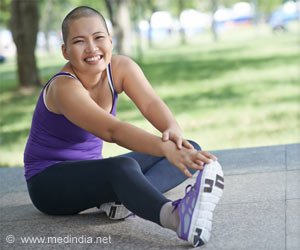High-impact activities like running are better than resistance training in making bones strong, according to University of Missouri researchers.
University of Missouri researchers have opined that high-impact activities (running, for instance) are way better than resistance training if the aim is to make the bones strong.
Resistance training often is recommended to increase and prevent loss of bone mineral density (BMD), despite earlier studies produced varied results.In the new study, the researchers found that running might have a greater positive effect on BMD than resistance training.
"The results of the study confirm that both resistance training and high-impact endurance activities increase bone mineral density. However, high-impact sports, like running, appear to have a greater beneficial effect," said Pam Hinton, an associate professor in the Department of Nutrition and Exercise Physiology in the MU College of Human Environmental Sciences.
The researchers said that the true effects of weight-bearing or resistance exercise are only apparent when controlling for differences in body weight or composition.
Hinton claimed that people who primarily performed non weight-bearing activities would benefit from resistance training that increases lean body mass.
On the other hand, those who engage in activities like cycling, swimming, or rowing should add bone-strengthening activities, such as resistance training or running, to their exercise regimens.
Advertisement
He added: "The response of bone to loading is determined by the magnitude of the force, and the rate and direction(s) at which it is applied. Therefore, high-impact, dynamic, multi-directional activities, including structured jump-training (plyometrics), result in greater gains in bone strength. Playing basketball, volleyball, or soccer are also good options."
Advertisement
They adjusted for differences in lean body mass, and found that runners had greater spine BMD than cyclists.
Hinton said that lean body mass was positively linked with BMD in both resistance-trained individuals and cyclists, but not in runners. Therefore, said the researcher, high-impact activity might score over the benefits of lean body mass on BMD.
The study, "Lean body mass and weight-bearing activity in the prediction of bone mineral density in physically active men," has been published in the Journal of Strength Conditioning.
Source-ANI
TAN/L












